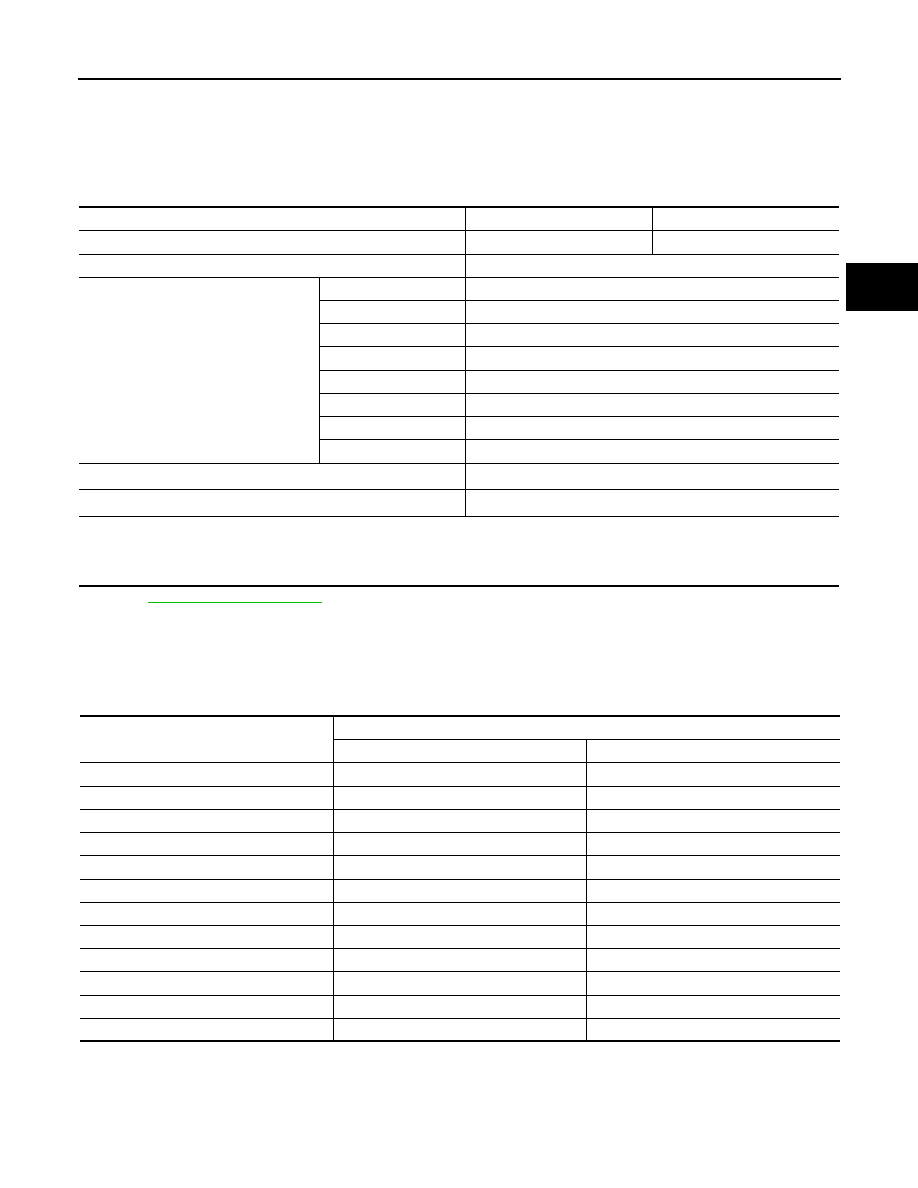Content .. 1843 1844 1845 1846 ..
Infiniti FX35, FX50 (S51). Manual - part 1845

SERVICE DATA AND SPECIFICATIONS (SDS)
TM-187
< SERVICE DATA AND SPECIFICATIONS (SDS)
[7AT: RE7R01A (VQ35HR)]
C
E
F
G
H
I
J
K
L
M
A
B
TM
N
O
P
SERVICE DATA AND SPECIFICATIONS (SDS)
SERVICE DATA AND SPECIFICATIONS (SDS)
General Specification
INFOID:0000000005250178
*1: Refer to
MA-12, "Fluids and Lubricants"
.
*2: The fluid capacity is the reference value.
Vehicle Speed at Which Gear Shifting Occurs
INFOID:0000000005250179
2WD MODELS
Unit: km/h (MPH)
• At half throttle, the accelerator opening is 4/8 of the full opening.
AWD MODELS
Applied model
2WD
AWD
Transmission model code number
3RX1C
3RX1D
Stall torque ratio
1.92 : 1
Transmission gear ratio
1st
4.924
2nd
3.194
3rd
2.043
4th
1.412
5th
1.000
6th
0.862
7th
0.772
Reverse
3.972
Recommended fluid
Genuine NISSAN Matic S ATF
*1
Fluid capacity
9.2 liter (9-3/4 US qt, 8-1/8 Imp qt)
*2
CAUTION:
• Use only Genuine NISSAN Matic S ATF. Never mix with other ATF.
• Using ATF other than Genuine NISSAN Matic S ATF will cause deterioration driveability and A/T durability, and may damage
the A/T, which is not covered by the INFINITI new vehicle limited warranty.
Gear position
Throttle position
Full throttle
Half throttle
D
1
→
D
2
58 – 62 (36 – 38)
24 – 28 (15 – 17)
D
2
→
D
3
91 – 99 (57 – 61)
50 – 58 (31 – 36)
D
3
→
D
4
143 – 153 (89 – 95)
81 – 91 (51 – 56)
D
4
→
D
5
209 – 219 (130 – 136)
116 – 126 (73 – 78)
D
5
→
D
6
250 – 260 (156 – 161)
174 – 184 (109 – 114)
D
6
→
D
7
250 – 260 (156 – 161)
250 – 260 (156 – 161)
D
7
→
D
6
240 – 250 (150 – 155)
201 – 211 (125 – 131)
D
6
→
D
5
215 – 225 (134 – 139)
127 – 137 (79 – 85)
D
5
→
D
4
197 – 207 (123 – 128)
75 – 85 (47 – 52)
D
4
→
D
3
121 – 131 (76 – 81)
46 – 56 (29 – 34)
D
3
→
D
2
70 – 78 (44 – 48)
22 – 30 (14 – 18)
D
2
→
D
1
23 – 27 (15 – 16)
8 – 12 (5 – 7)